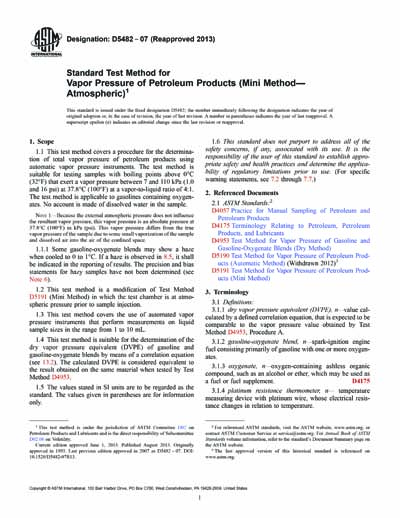Historical
ASTM D5482-07(2013)
Standard Test Method for Vapor Pressure of Petroleum Products (Mini Method—Atmospheric)
1.1 This test method covers a procedure for the determination of total vapor pressure of petroleum products using automatic vapor pressure instruments. The test method is suitable for testing samples with boiling points above 0°C (32°F) that exert a vapor pressure between 7 and 110 kPa (1.0 and 16 psi) at 37.8°C (100°F) at a vapor-to-liquid ratio of 4:1. The test method is applicable to gasolines containing oxygenates. No account is made of dissolved water in the sample.
Content Provider
ASTM International [astm]






